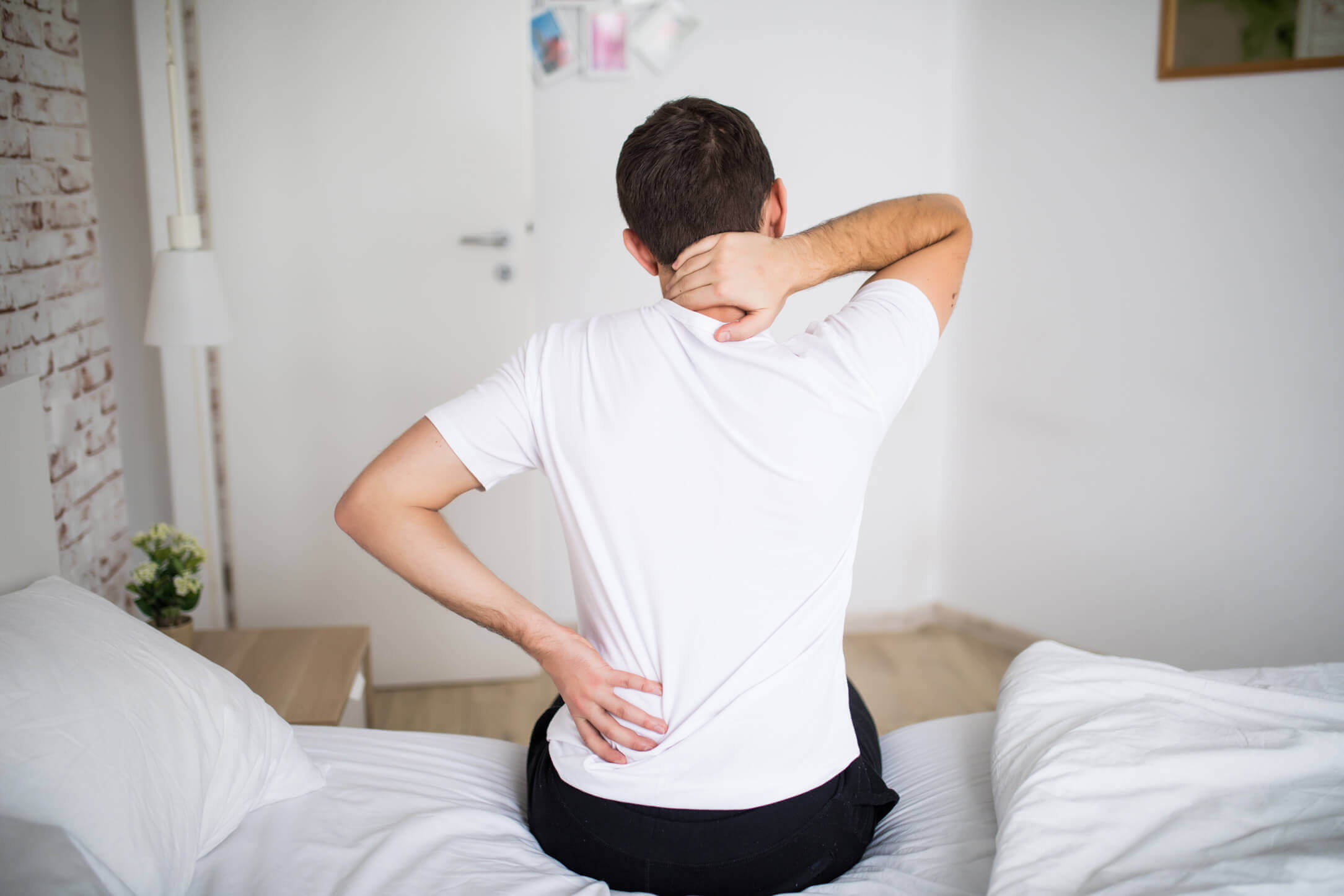One of the main health benefits of adjustable beds is back & neck pain relief. In this article, we will dive into the greater details on how adjustable bases can help reduce symptoms. A flat bed may not provide the proper support for the spinal cord, resulting in excess back pain and restless sleep. The neck and back are some of the most common areas where people experience pain.

Discogenic Disease vs. Spinal Stenosis
Over 20% of people aged 20-59 report chronic pain, while 70-80% of people will experience some type of neck or back pain. However, not all pain is created equal—pain is categorized as discogenic disease and stenosis, both of which have different requirements for alleviating pain. The custom positions on adjustable beds can be tailored to help reduce both discogenic disease and stenosis.
According to the Laser Spine Institute, discogenic disease is the deterioration of spinal discs, leading to an increased pain sensitivity and weakened carry load of the back. Proper spinal alignment and weightlessness can help to unload pressure and relieve pain from this condition. The Preset Positions in adjustable beds allow those with discogenic disease to customize the most relieving bed position that fits their natural spinal curvature.
People with spinal stenosis also require elevated head and feet while they sleep, but for different anatomical reasons. According to Mayo Clinic, this condition is categorized by less space between vertebral discs, causing severe postural changes. In many cases, people with this condition are unable to lay flat. Positions like Zero G provide a better solution to help ease pain from these conditions
Adjustable Bases vs. Flat Foundations
A flat bed may not provide the proper support for the spinal cord, resulting in excess back pain and restless sleep. Slanting the head by 45-degrees relieves compression for the lower back to reduce pain, and the angled head also allows for prevention of neck aches by providing a well-supportive platform replacing the need of multiple pillows. Raising the foot of the bed allows for knees to be bent, and legs to be levitated, to take off un-needed pressure affecting the spine. So, while not a cure for chronic back pain, adjustable beds can alleviate a noticeable amount of the pressure and pain caused by these conditions.
Slanting the head by 45-degrees relieves compression for the lower back to reduce pain, and the angled head also allows for prevention of neck aches by providing a well-supportive platform replacing the need of multiple pillows. Raising the foot of the bed allows for knees to be bent, and legs to be levitated, to take off un-needed pressure affecting the spine. Adjustable beds can alleviate a noticeable amount of the pressure and pain caused by these conditions.
